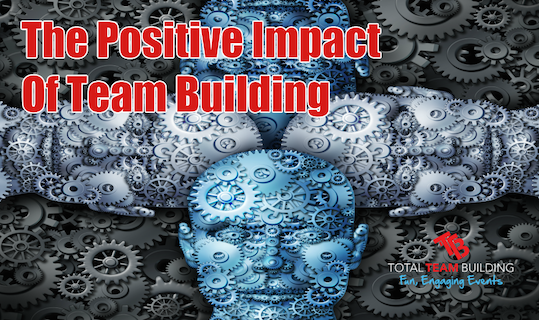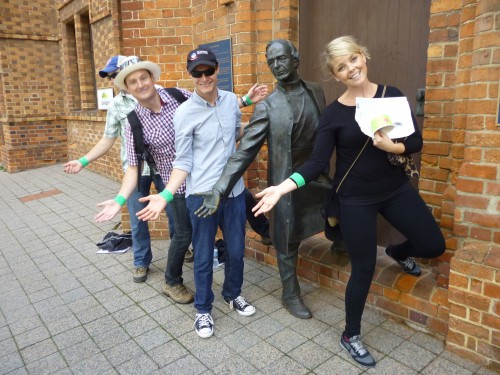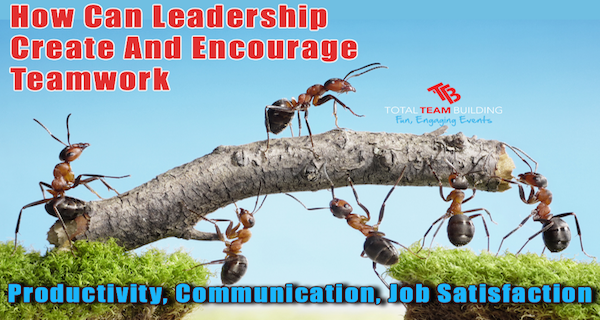The Positive Impact Of Team Building
Research has clearly shown that team building has a significant positive impact on teams that find it difficult to work well together. (1) Team building, as the name implies, involves helping employees and management alike learn how to work together as a team. Companies all over the world use a variety of techniques and strategies to help company workers get to know each other and learn how to solve problems, boost personal and collective creativity and work well towards achieving a common goal.

Goal setting and role clarification are particularly effective, as they help each employee better understand his or her individual role, inspire people to set goals, increase motivation to reach company and individual goals and reduce conflict in the office. Teams of ten people or more tend to benefit the most from team building activities; however, such exercises are still effective when used for small groups of people.
What Exactly Does Team Building Do And Does it Work?
The impact of team building is felt in many ways. The following list of benefits that can be gained is by no means comprehensive, but it can give insight into why sacrificing time, resources, and even money for the sake of team-building is well worth it.
Boost Engagement
Recent statistics show that companies with engaged employees earn up to 2.5 times more income than competitors whose employees have a low engagement level. What is more, employees with a high engagement level are 87% less likely to leave a company than employees with a low engagement level.(2)
 Infographic crafted with love by Officevibe, the corporate team building and employee engagement platform.
Infographic crafted with love by Officevibe, the corporate team building and employee engagement platform.
Team building, when done properly, fosters friendships at work. Research has shown that having a good friend at work can boost one’s engagement level by up to 50%.(3) Team building exercises that are effective in helping employees make friends with workmates include a weekly or monthly “Happy Hour”, a company volunteer project and seminars hosted in turn by various employees.
Another important aspect of team building involves building trust between office supervisors and managers and those who work under them. A 2015 Gallup study shows that a highly engaged leadership team can boost employee engagement by up to 39%. Company leaders can improve engagement by setting individual and company goals in collaboration with employees, being transparent about company progress and creating a company culture. Good team-building exercises that would boost manager-employee friendships include group challenges with mixed teams of managers and employees who would be required to work together as equals to solve a problem or win a game.
Improve Communication Skills
Over 85% of all workplace failures have been attributed to lack of collaboration and/or ineffective communication. Additionally, a recent survey revealed that fewer than 50% of employees believe that their organization discusses issues in a truthful, effective manner. (4)
Team building activities that require team members to communicate with each other to resolve a problem or win a competition can be effective in helping employees become effective communicators. At the same time, these activities should be coupled with office policies that promote team bonding.
One idea that has proven to be effective with a large bank was to rearrange the coffee break schedule so that each call center team could take a break together as a group. This simple move lowered the average call handling time by up to 20% and increased employee satisfaction by more than 10%, leading to a profit projection increase of more than $15 million. (5)
Team building involving social media platforms can also be effective, especially if a large number of office workers are millennials. One recent study shows that nearly half of all Millennials support the use of social tools to increase workplace collaboration. What is more, the overwhelming majority of young people interviewed in this study would be willing to pay for such tools out of pocket. (4)
Improve Creativity
Many of the world’s largest companies realize that creativity can significantly boost a company’s bottom line. Google, 3M and Gore and Associates all allow time for employees to get away from their regular jobs and come up with new ideas, procedures and products. What is more, these large companies all credit “company creativity time” as being the inspiration behind some of their most successful products.(6)
Team building improves creativity in two ways. First of all, it puts employees in a new environment and requires them to perform tasks and/or solve problems that are not a part of their day to day work routine. Second, creativity-based team building exercises make it clear to employees that company managers and executives value creativity.
It can be worth it for a company to hold monthly or annual team building events at a venue that is far removed from the office environment. A hotel conference room can be a good place to hold creativity-based team building games and activities; alternatively, an outdoor setting can be ideal if all employees are physically fit and able to engage in active team sports and activities.
In Summary
While hiring the right employees is certainly important, it is clear that choosing good people for your company is not the only key to success. Helping your employees work well together can not only boost your bottom line but also reduce workplace friction, prevent good people from leaving your company, help your company solve problems more easily than would have otherwise been possible and even lead to the creation of new goods and/or services that will propel your company forward into the future.
Team building events help employees get to know each other, learn how to work together and make it easy to communicate about workplace issues. However, knowing which team-building strategies are right for your company can be challenging. That is why it can be a good idea to work with professionals who specialize in team building events, activities and programs. Getting professional help in this field will ensure that your team is effective and that employees enjoy working with you and their colleagues to try new ideas, solve problems and reach company and personal goals.
If you would like to speak to us about how we can help you with your team, Contact Total Team Building today!
Sources
(1) https://en.wikipedia.org/wiki/Team_building#Effect_on_performance
(2) https://www.officevibe.com/blog/disengaged-employees-infographic
(3) http://blog.desktime.com/2016/02/11/team-building-events-that-work/
(4) http://blog.clearcompany.com/7-workplace-collaboration-statistics-that-will-have-you-knocking-down-cubicles
(5) https://hbr.org/2012/04/the-new-science-of-building-great-teams
(6) https://www.psychologytoday.com/blog/the-power-daydreaming/201002/sparking-creativity-in-the-workplace




